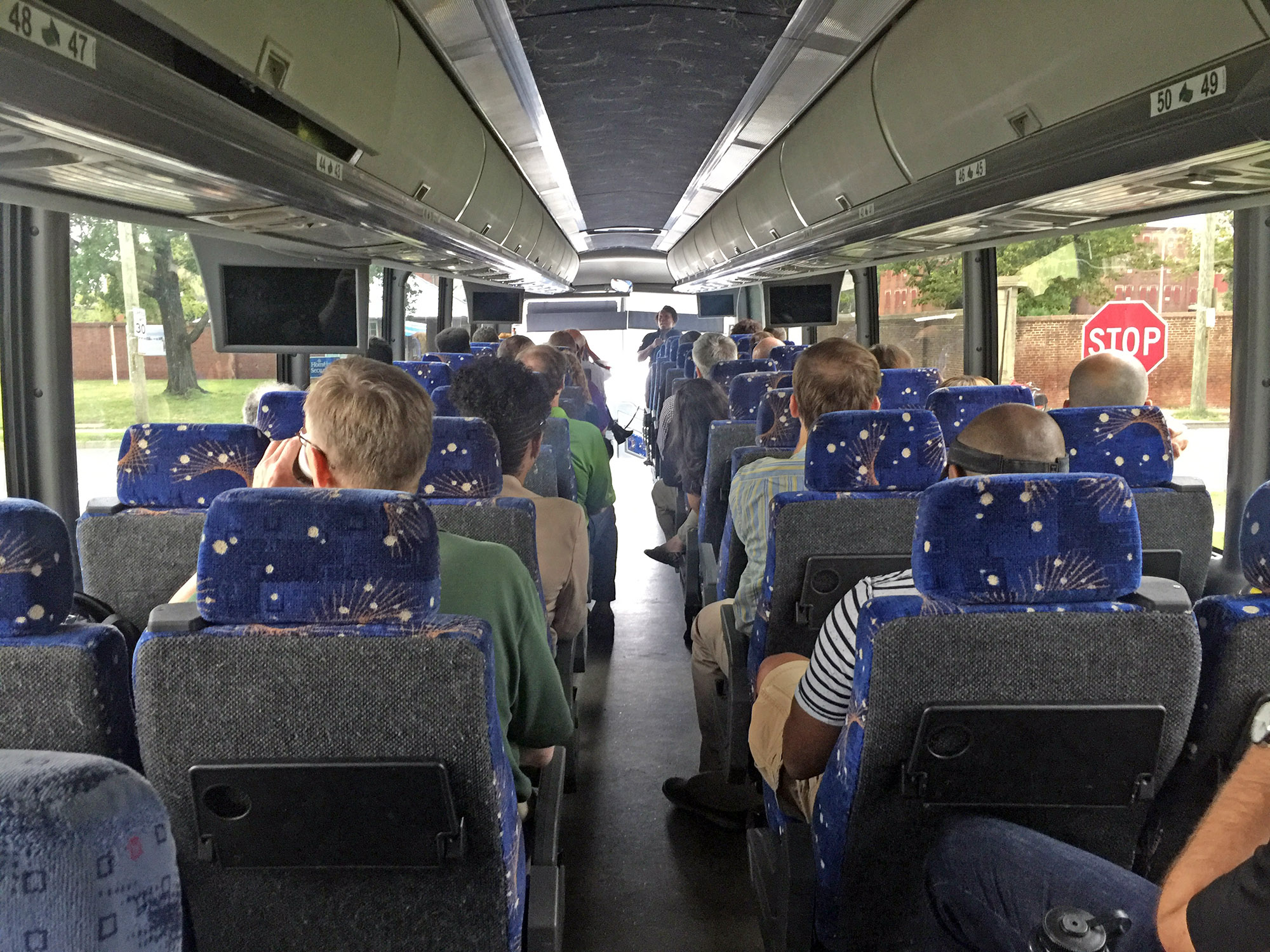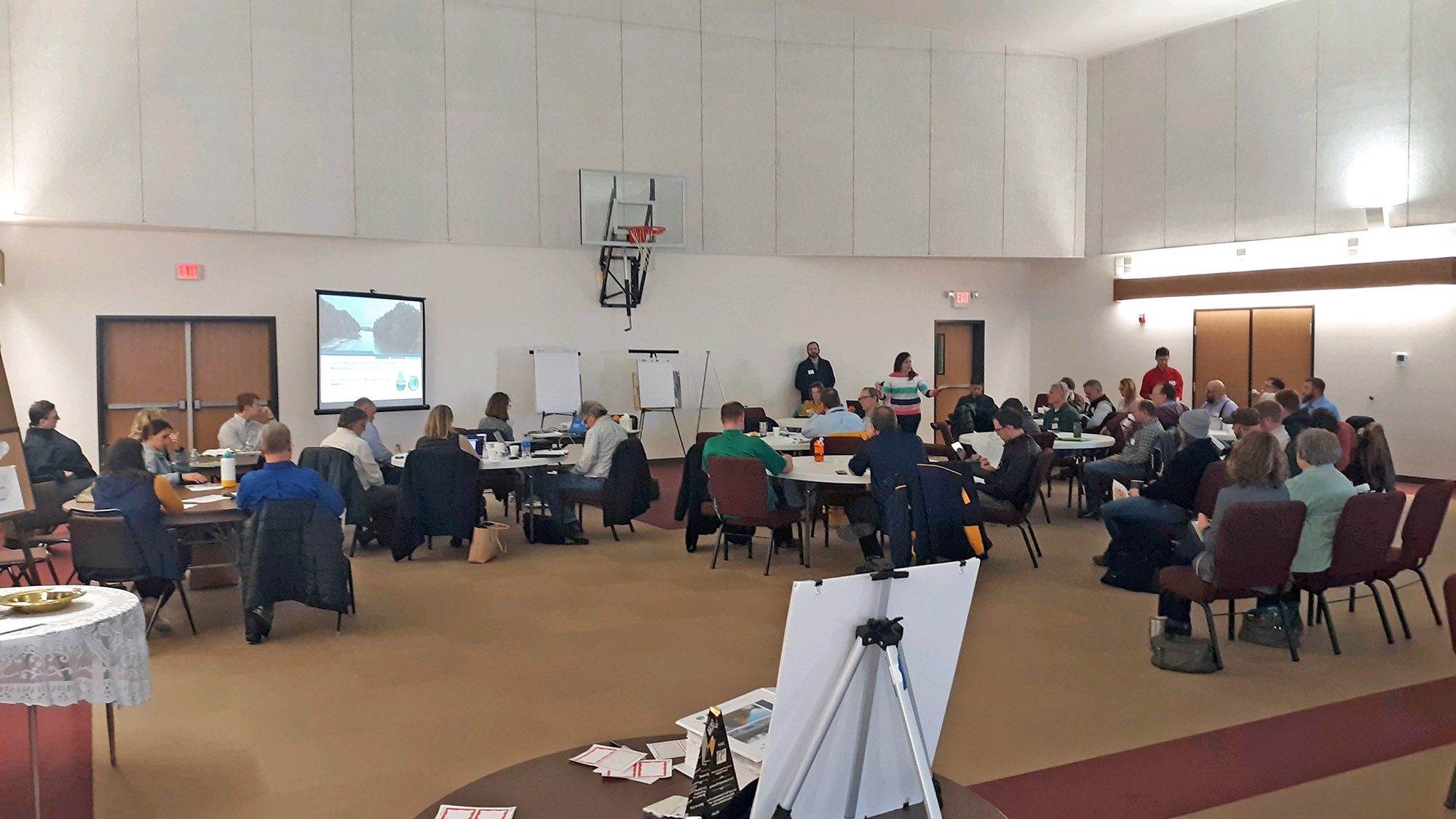Challenge
Every year, FEMA and a state or territory work together to find ways to advance mitigation programs. These touchpoints strengthen communication, relationships and mitigation outcomes. Below are how Washington, D.C. and the state of Iowa approached these meetings to better engage partners and attendees.
Solution
District of Columbia
In August 2019, FEMA Region 3 and its D.C. partners agreed that the concept of mitigation can be hard to understand. They wanted to shift the meeting to make mitigation more meaningful for attendees.
FEMA and its D.C. partners decided to transform the standard indoor meeting format into a “Risk and Resiliency Site Visit.” Following a brief welcome at the Homeland Security and Emergency Management Agency (HSEMA), attendees boarded a chartered bus to see firsthand how geographic focus areas were progressing with their risk reduction priorities.

The site visits gave the more than 30 attendees a chance to interact with state and local partners. Visiting communities, walking through sites, and viewing flood damage and its impact provided a unique experience that a slideshow could never duplicate. Attendees reported there were more and better‑informed discussions around mitigation, and conversations occurred naturally and informally throughout the day. Following this successful event, FEMA Region 3 is exploring more ways to introduce interactive meeting components for other state and local partners.
Iowa
The 2019 annual Iowa state consultation focused on collaboration, integration and capacity building. Iowa used this meeting to work with FEMA Region 7 and discuss available resources and the technical assistance needed to successfully implement their enhanced hazard mitigation plans.
FEMA expressed interest in the Iowa Watershed Approach’s methods for watershed management and flood resiliency plans. Participants discussed merging these plans with hazard mitigation and other resiliency plans. They also discussed ways FEMA and other federal and state agencies could provide data, technical assistance or funding to support projects.

This led to a special workshop for state and federal partners supporting the Iowa Flood Risk Management Team. The workshop discussed mitigation actions in the East and West Nishnabotna River Watershed Management and Flood Resilience Plans and how resources could be used to move future mitigation projects forward.
Cara Marker-Morgan from the Watershed Management Authority noted the momentum following the state program consultation meeting: “This is wonderful to see this kind of action and traction so soon after the meeting. It means more locally, when we get something done.”
Key Takeaways
- Executing engaging mitigation program consultations can be time- and resource-intensive, but it results in deeper relationships between FEMA and state, tribal and territorial partners.
- Encouraging people to view the mitigation projects in-person makes the projects real and relatable.
- Consultations can help states identify other ways to work with internal and external partners.
Related Documents and Links
The application window to apply for FEMA Hazard Mitigation Assistance grants is open through Jan. 29, 2021. To learn more about funding eligible projects, review the Flood Mitigation Assistance Program and the new pre-disaster mitigation program, Building Resilient Infrastructure and Communities. A FEMA-approved hazard mitigation plan is required for funding under these programs.


